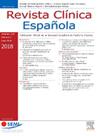El receptor soluble para productos finales de glicación avanzada se correlacionó positivamente con la lesión renal con la enfermedad coronaria
IF 1.7
4区 医学
Q2 MEDICINE, GENERAL & INTERNAL
引用次数: 0
Abstract
Aims
Coronary heart disease (CHD) patients with changed serum soluble receptor for advanced glycation end-products (sRAGE) will experience microalbuminuria and even kidney dysfunction. However, the role of sRAGE for microalbuminuria in CHD is still not established. This study aimed to evaluate the association between sRAGE and early kidney dysfunction in CHD patients.
Materials and methods
In this cross-sectional study, sRAGE and urinary albumin to creatinine ratio (uACR) were measured in hospitalized CHD patients who have undergone coronary arteriography to evaluate the distinction and correlation between sRAGE and uACR.
Results
There were 127 CHD patients (mean age: 63.06 ± 10.93 years, 93 males) in the study, whose sRAGE were 1.83 ± 0.64 μg/L. The sRAGE level was higher in kidney injury group (uACR ≥ 30 mg/g) compared with no kidney injury group (uACR < 30 mg/g) [2.08 ± 0.70 vs. 1.75 ± 0.61 μg/L, P < .05]. Moreover, the positive correlation between serum sRAGE and uACR was significant in CHD patients (r = 0.196, P < .05). Binary logistic regression suggests sRAGE as a predictor for microalbuminuria in CHD patients [odd ratio = 2.62 (1.12-6.15), P < .05]. The area under the receiver operating characteristic curve (AUC) of sRAGE is higher than that of the traditional indicators of renal function such as creatinine and estimated glomerular filtration rate, indicating sRAGE might have a good performance in evaluating early kidney injury in CHD patients [AUC is 0.660 (0.543-0.778), P < .01].
Conclusions
Serum sRAGE was positively correlated to uACR and might serve as a potential marker to predict early kidney injury in CHD patients.
高级糖化终产物可溶性受体与冠心病肾损伤呈正相关。
目的血清可溶性高级糖化终产物受体(sRAGE)发生变化的冠心病(CHD)患者会出现微量白蛋白尿,甚至肾功能障碍。然而,sRAGE 在冠心病微量白蛋白尿中的作用仍未确定。材料和方法在这项横断面研究中,对接受冠状动脉造影术的住院 CHD 患者的 sRAGE 和尿白蛋白肌酐比值(uACR)进行了测量,以评估 sRAGE 和 uACR 之间的区别和相关性。结果127 名冠心病患者(平均年龄:63.06 ± 10.93 岁,男性 93 人)的 sRAGE 为 1.83 ± 0.64 μg/L。肾损伤组(uACR ≥ 30 mg/g)的 sRAGE 水平高于无肾损伤组(uACR < 30 mg/g)[2.08±0.70 vs. 1.75±0.61 μg/L,P < .05]。此外,在冠心病患者中,血清 sRAGE 与 uACR 呈显著正相关(r = 0.196,P < .05)。二元逻辑回归表明,sRAGE 是冠心病患者微量白蛋白尿的预测因子[奇异比 = 2.62 (1.12-6.15),P < .05]。结论 血清 sRAGE 与 uACR 呈正相关,可作为预测 CHD 患者早期肾损伤的潜在标志物。
本文章由计算机程序翻译,如有差异,请以英文原文为准。
求助全文
约1分钟内获得全文
求助全文
来源期刊

Revista clinica espanola
医学-医学:内科
CiteScore
4.40
自引率
6.90%
发文量
73
审稿时长
28 days
期刊介绍:
Revista Clínica Española published its first issue in 1940 and is the body of expression of the Spanish Society of Internal Medicine (SEMI).
The journal fully endorses the goals of updating knowledge and facilitating the acquisition of key developments in internal medicine applied to clinical practice. Revista Clínica Española is subject to a thorough double blind review of the received articles written in Spanish or English. Nine issues are published each year, including mostly originals, reviews and consensus documents.
 求助内容:
求助内容: 应助结果提醒方式:
应助结果提醒方式:


